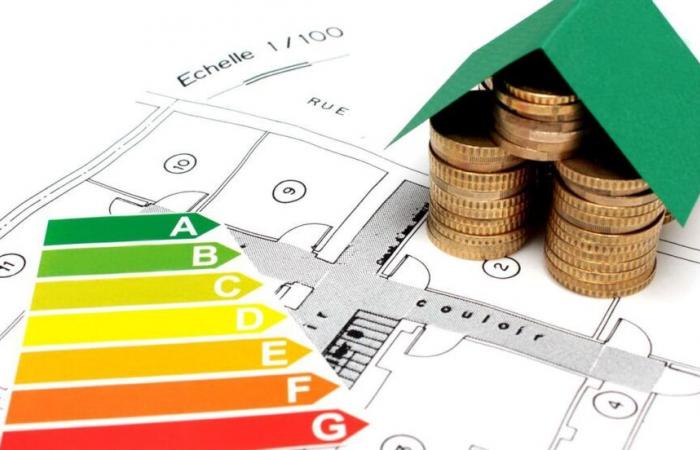This study, signed by the start-up KRNO which works for the reliability of real estate diagnostics, could well cause some noise. By relying in particular on the skills of two researchers in mathematics and artificial intelligence from the company, the start-up wanted to offer a mathematical demonstration of the scale and implications of fraud in the “DPE (energy performance diagnostics) of complacency.” Leaving aside pure and simple false DPEs (made by a forger) as well as misleading DPEs (where the diagnostician deliberately cheats by greatly improving the note), KRNO wanted to concentrate on “embellished” notes where the boost from the diagnostician often allows you to reach a higher letter.
A phenomenon which could seem marginal and well within the French spirit but ultimately turns out to be massive. By analyzing data from 8 million diagnoses from the ADEME database, the start-up compared these results to the “theoretical” mathematical distribution that can be expected. It appears that nearly 19% of properties classified F artificially move to the letter E (see the full study here). This is the highest figure in this study, knowing that 6% of properties that should be classified G move to F and a little less than 6% of E are upgraded to D. This concentration of “arrangements” between the letter E and F is explained quite easily by the strong financial interest existing in leaving the risk zone of thermal sieves, namely housing classified F or G. We also learn that this “complacency” is not limited to scrounging up a few tenths since the Improvements can be for the equivalent of half a letter (see below for the letter E).
1.3 million homes affected
In total, these various frauds would affect 1.3 million homes and cost 21.4 billion euros. This last figure is obtained based on the number of housing units in the different energy classes (in particular 650,000 F housing units upgraded to E or nearly 450,000 E housing units upgraded to D) and the price differences when going from one letter to the next. other (study by notaries on the “green value” which shows for example that between housing G and comparable housing F, the price difference is 10% or 8% between Party). Everything takes into account an average price of real estate in France estimated at 250,000 euros, to arrive at this astronomical figure. “I myself was surprised by the scale of the phenomenon, admits Ruben Arnold, CEO of KRNO. And this is why it is a real fraud and not an innocent phenomenon, with no financial impact.”
But far from adopting an anti-diagnostics discourse to point the finger at this profession, the start-up aims to be constructive. “The DPE was never designed as a tool for maximum precision but rather as a balance between low cost and precision, recalls Ruben Arnold. And we put increasingly significant charges on his back.” And if, as in any profession, there are dishonest professionals, many diagnosticians are placed in an uncomfortable situation. According to the start-up, the DPE could undoubtedly be further improved from a technical point of view in terms of the calculation method, but it is above all its implementation that should be reviewed. “There is a real problem with the margin of error, a question which is not taken into account unlike the Carrez measurement where we cannot exceed 5%. And there is also the fact that the diagnostician can communicate or know the result before it is officially recorded.
Towards recurring control?
KRNO therefore recommends that the results recorded by the diagnostician be transmitted and recorded on the Ademe database before obtaining the result. It would then still be possible to make modifications but they would be easily traceable. Another possible avenue and which is the one that the start-up markets to its customers: offer buyers the opportunity to carry out a contradictory examination of this DPE to uncover possible contradictions or errors in the diagnosis. And finally, undoubtedly in a more distant horizon, KRNO is considering a more recurring inspection, such as a technical inspection of vehicles which would make it possible to stick as closely as possible to the energy performance of each home. A more effective solution but also much more expensive.






